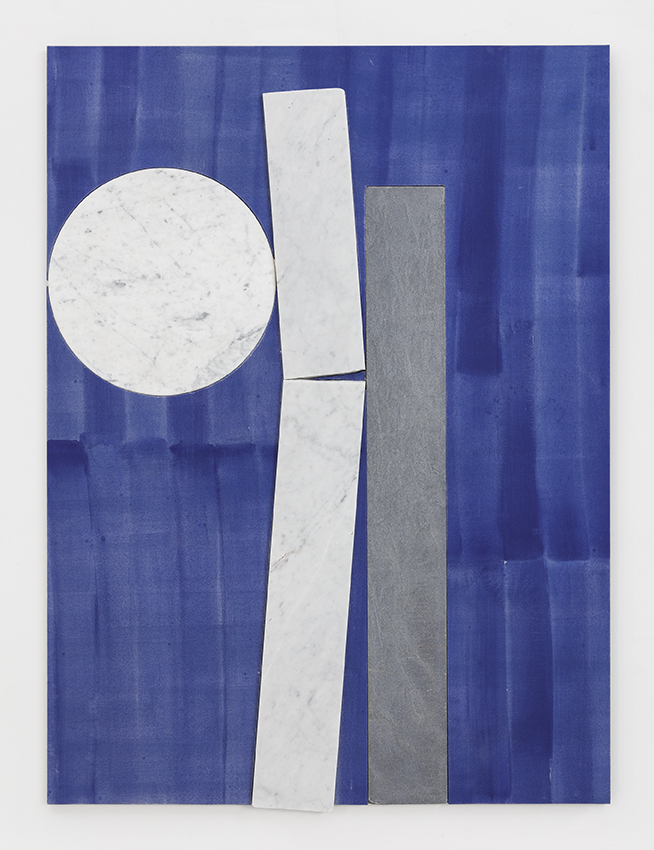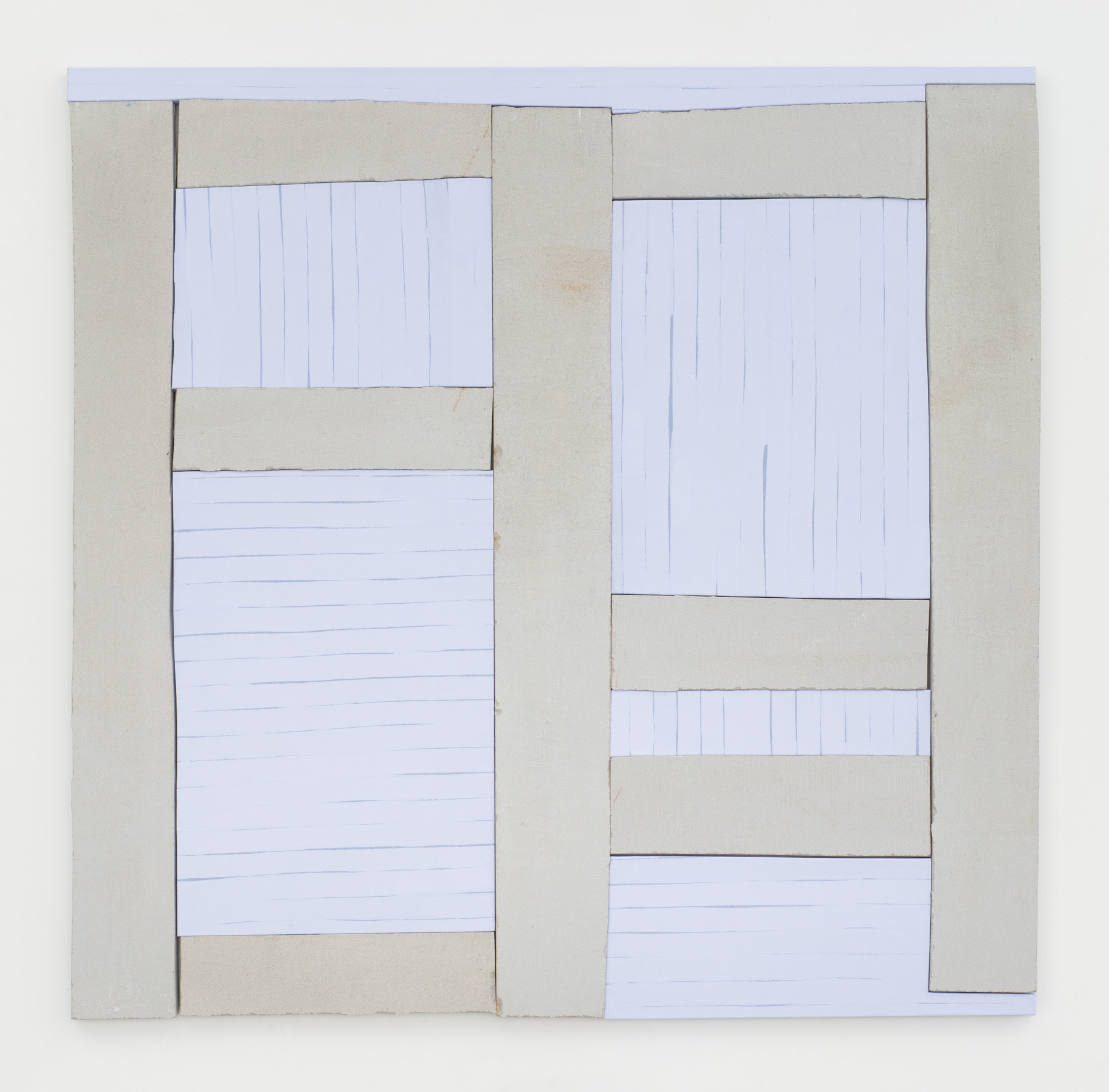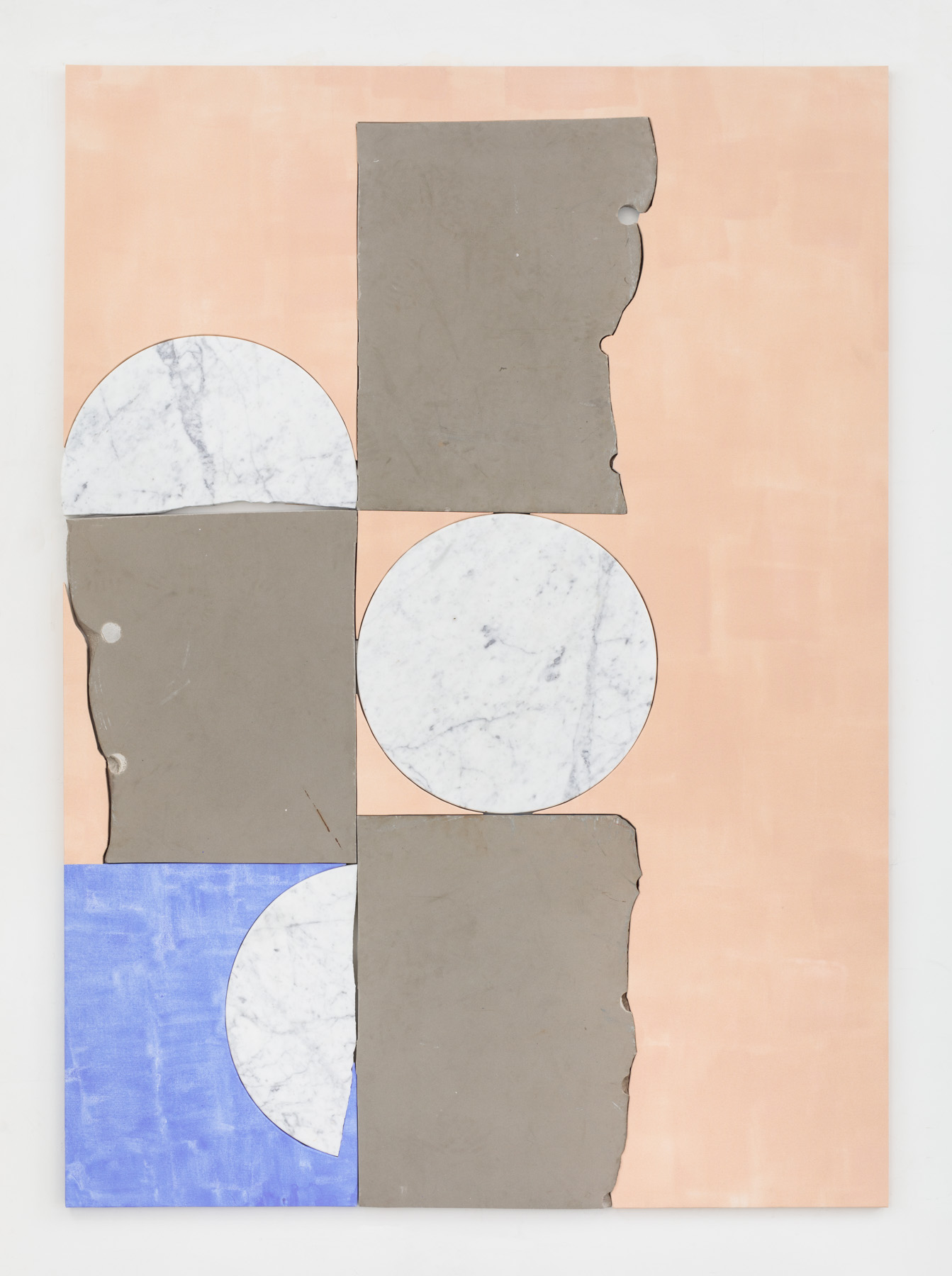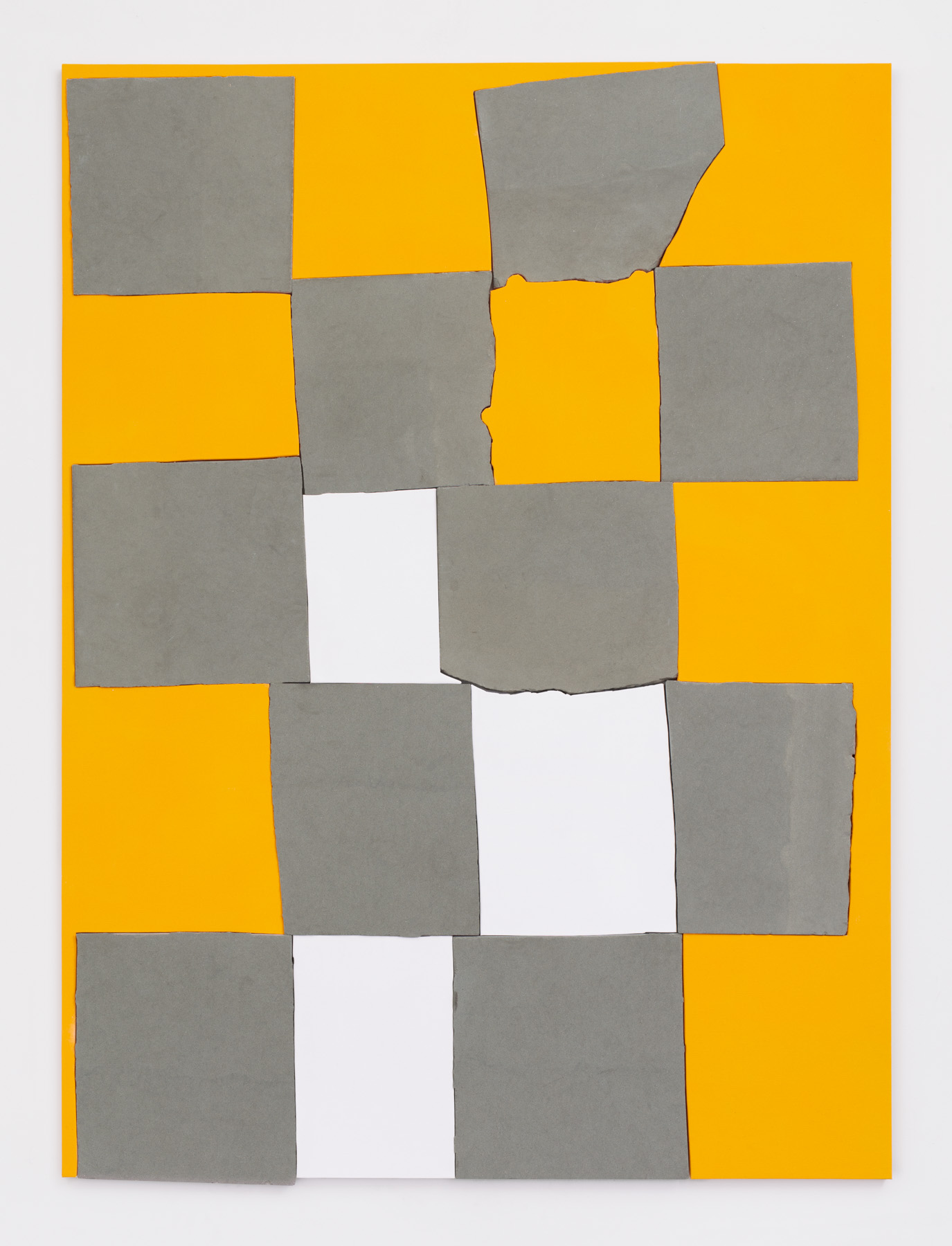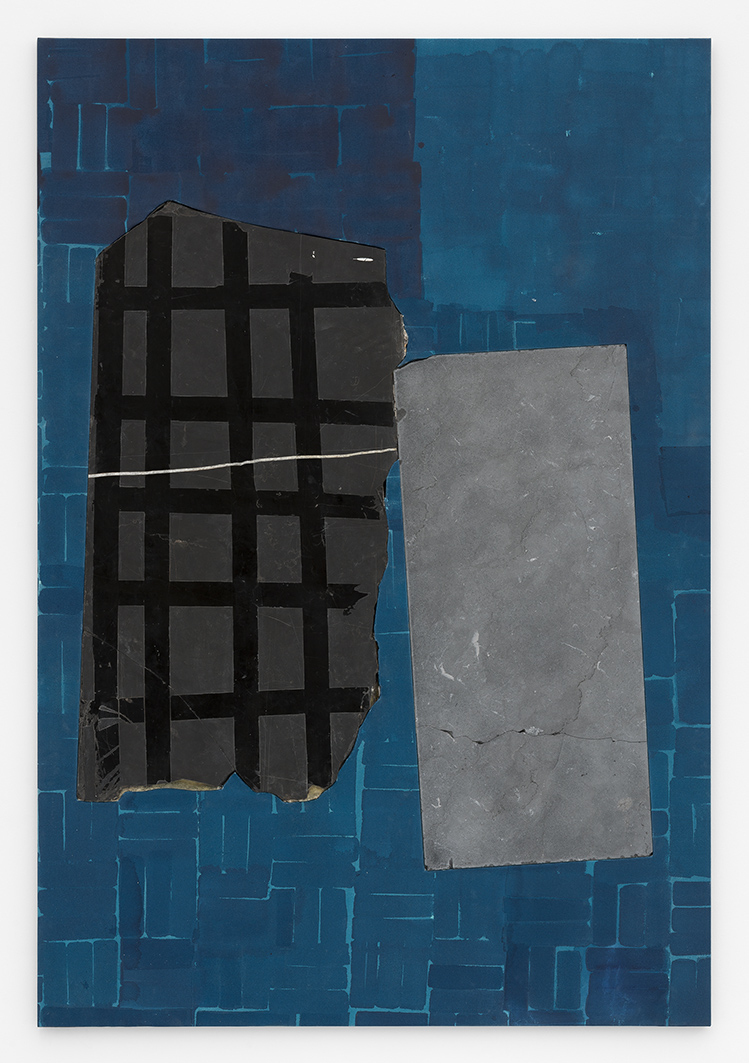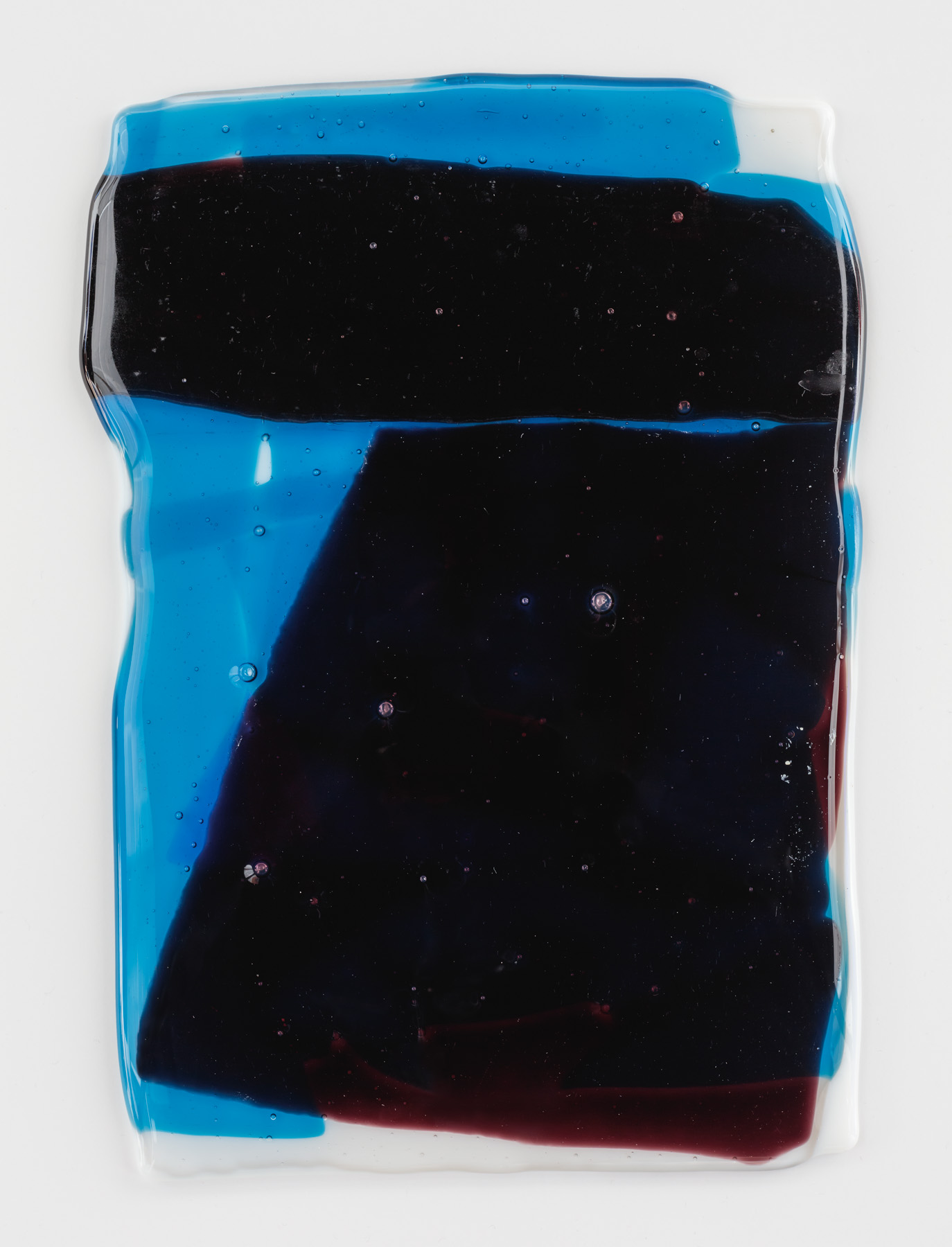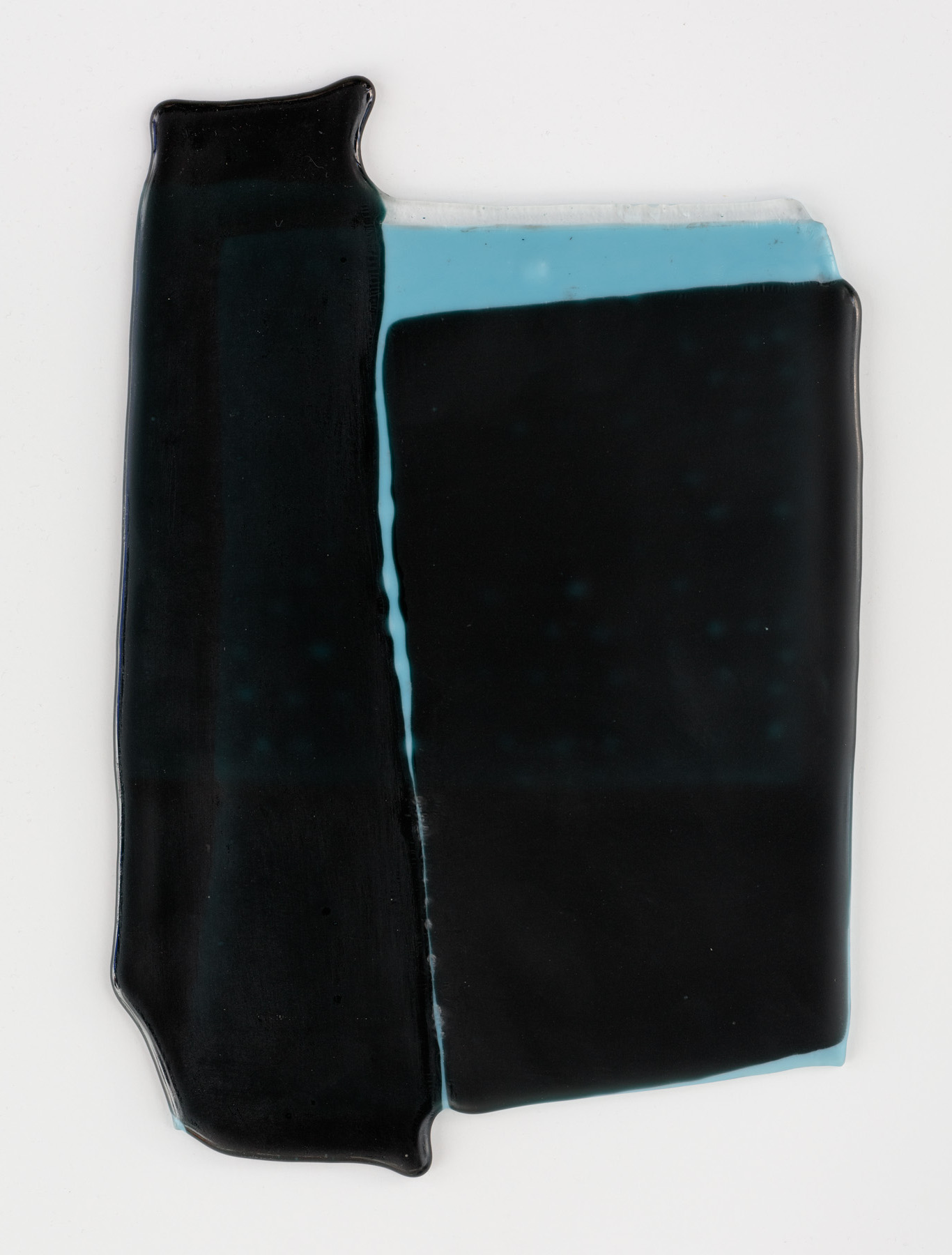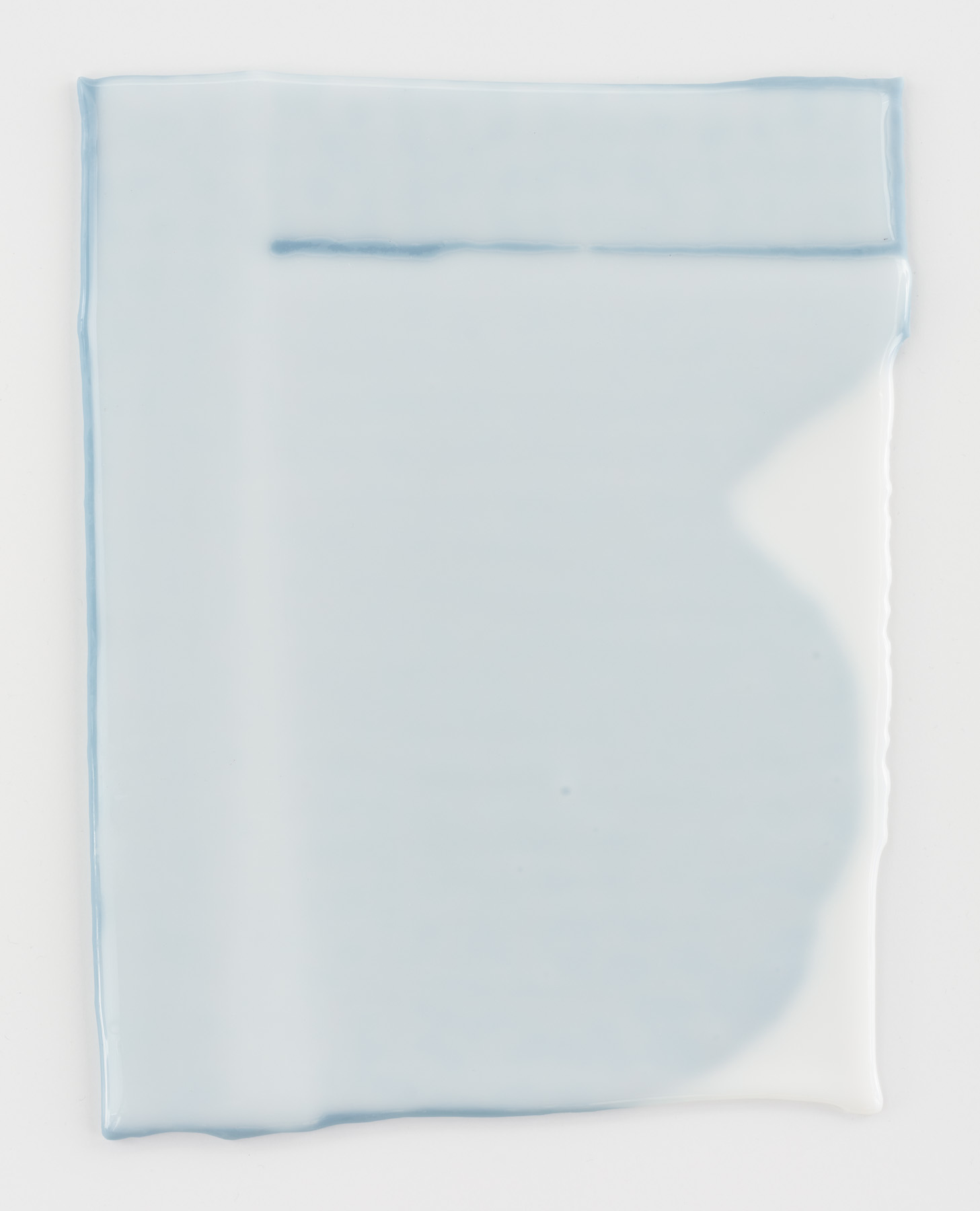Sam Moyer – Many Moons
Sam Moyer
Many Moons
| (Past) | 15.03.201815.03.18 — 05.05.201805.05.18 |
|---|---|
| (Gallery) | Rue de Livourne 35 Livornostraat |
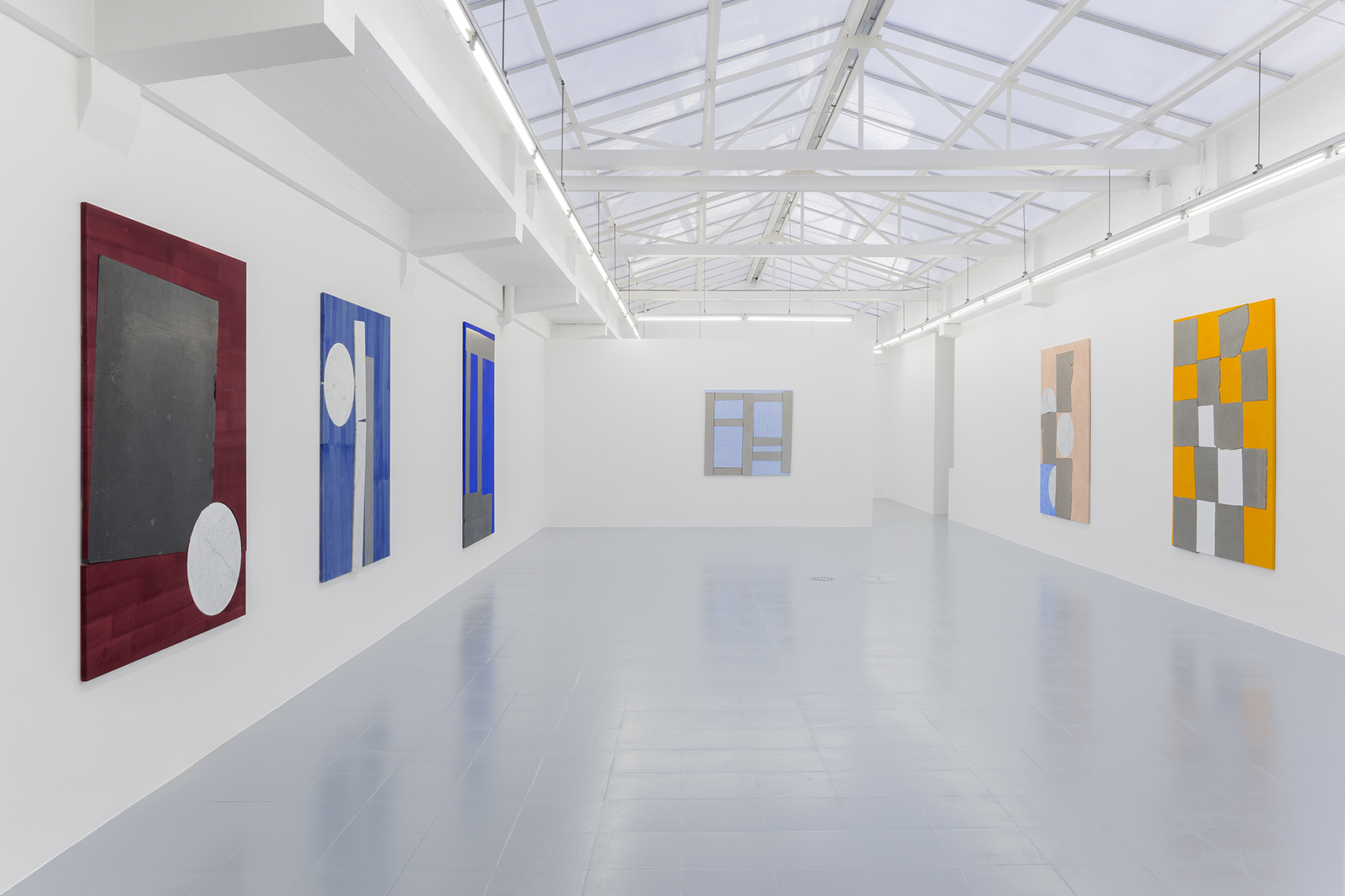
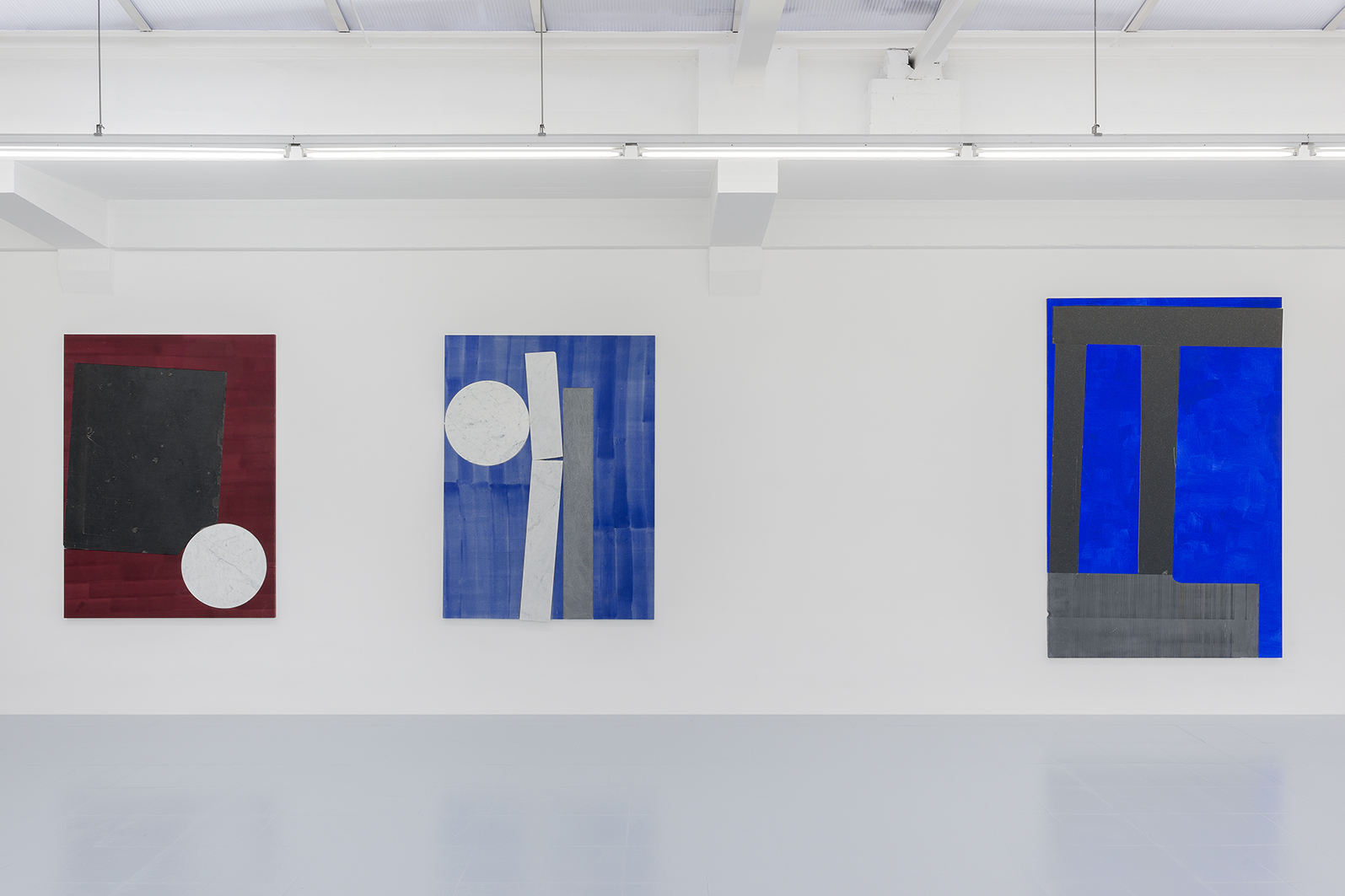






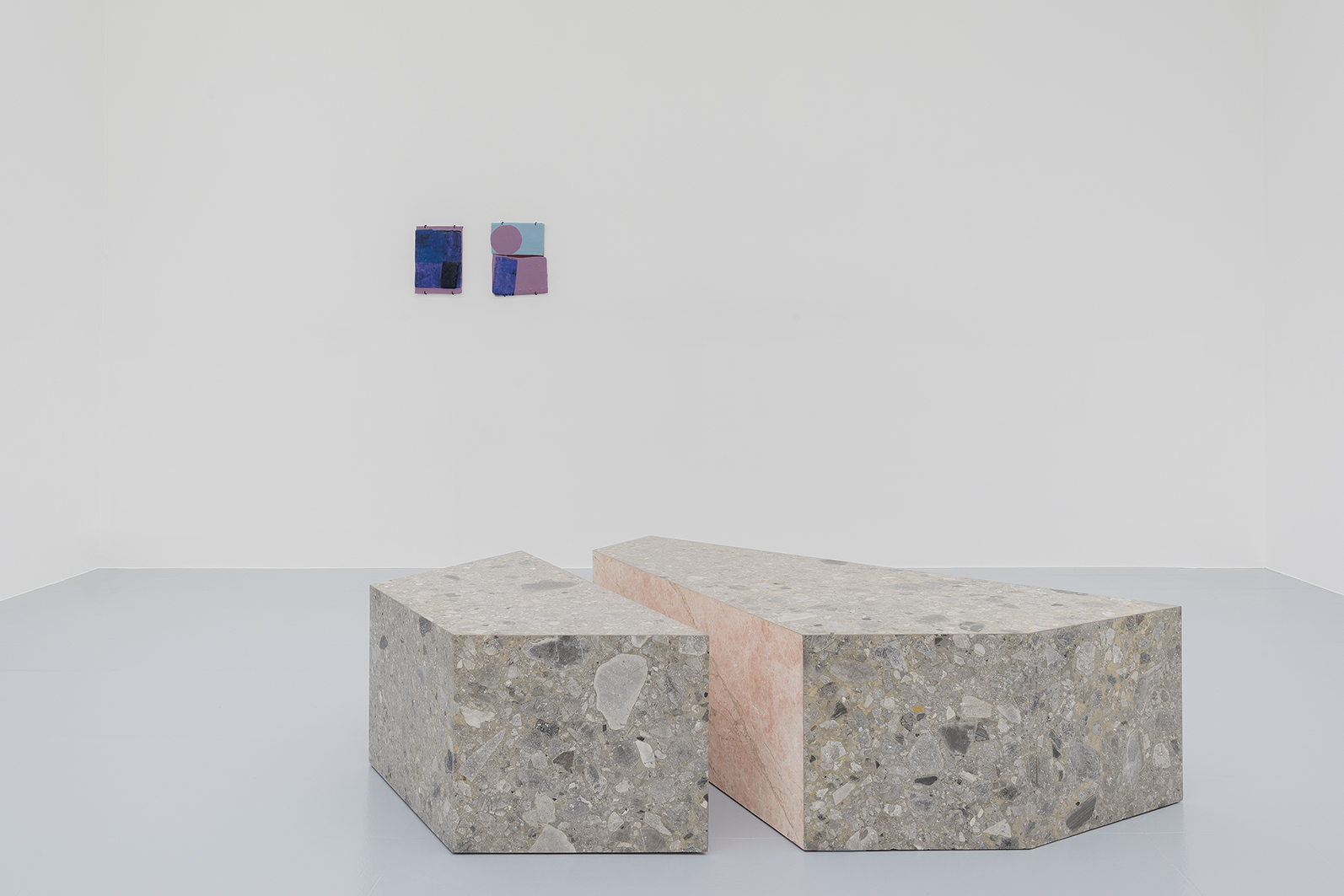

(01/10)Exhibition views
Galerie Rodolphe Janssen is pleased to present an exhibition of new works by Sam Moyer. In the artist’s third solo exhibition with the gallery, Moyer continues her practice of combining found stone with hand painted canvas.
The new works on view represent a synthesis of Moyer’s past material-conceptual studies, which mix medium-specific techniques like photography, painting, installation, and sculpture in order to engage their historical resonance. In these wall works salvaged stone scraps, including several marble Saarinen tabletops once homed in a private park in Manhattan, nestle amongst specially fitted segments of hand-painted canvas mounted to MDF panel. Moyer arranges the stone pieces according to an improvised geometry, allowing the pre-existing shapes to interact with each other as well as the prepared fabric, where the artist’s hand is evident to varying degrees in the delicate treatment of the painted surface. Marked with natural veins and visible wear, the stone cuts function as the pictorial element, while the painted canvas becomes the spatial or sculptural element—the background and literal support that holds found shapes in space and fills the gaps between them. Here painting becomes the space that holds found sculpture, which constitutes the picture. This flipping of roles reflects a tension between the modern histories of painting and sculpture and the break with object based and medium specific practices that characterizes contemporary art.
Working within art historical traditions ranging from the readymade, to color field painting, to the chance compositions of Dada and Fluxus artists, Moyer uses a limited set of compositional elements to create a sense of precarious balance frozen in time. If the pictures existed in three dimensional space they would topple. Yet, as objects the works insist on their spatial reality, which is activated by their relationship to the viewer. The stone’s particular physical qualities are visible close up, but fade as the viewer moves away, allowing the pictorial space to dominate. So, what each section is pictorially and what they are in reality shift as the viewer moves around the works.
When an art object is pared down to its essential elements, small choices become significant, like one of Mondrian’s black lines not quite reaching the edge of the canvas. Moyer’s works thrive in these moments: a support’s slanted top, or an inch of grey rectangle poking out just beyond the frame. The monochromatic stones exist somewhere between their past as utilitarian objects and their inherent logic as design components against the colorful primary tones of the canvas. The history of painting and masonry as craft surface in this light.
The breadth of monumental history foregrounding Moyer’s practice could leave one preoccupied with what’s come before, what the artwork is inheriting, rather than what the artwork can say about the present. The contemporary era is marked by a state of permanent transition—a paradoxically tumultuous stasis. Crisis (environmental, economic) and progress (technological, social) are recurring facets of lived experience. For this reason, artworks that capture a dynamic between old and new, between reasoned intention and chance occurrence, fixing these in time and space for consideration, like those on view here, have the capacity to tell us something about our lives, about history, and about our capacity for experience. In short, Moyer’s works illustrate that the past still weighs on us, perhaps just as heavily as the present.
Artworks
(09)-
![Sam Moyer, Hold On]()
(Artist) Sam Moyer (Title) Hold On (Year) 2018 (medium) Marble, stone, hand painted canvas mounted to MDF panel (Dimensions) #ERROR! (Reference) (SMoy146) -
![Sam Moyer, Joshua]()
(Artist) Sam Moyer (Title) Joshua (Year) 2018 (medium) Marble, stone, hand painted canvas mounted to MDF panel (Dimensions) 168 x 124.8 cm;
66 1/8 x 49 1/8 in(Reference) SMoy141 -
![Sam Moyer, Addled Abacus]()
(Artist) Sam Moyer (Title) Addled Abacus (Year) 2018 (medium) Stone, hand painted canvas mounted to MDF panel (Dimensions) 124.5 x 127 x 1.9 cm;
49 x 50 x 3/4 in(Reference) SMoy143 -
![Sam Moyer, Moontower]()
(Artist) Sam Moyer (Title) Moontower (Year) 2018 (medium) Marble, stone, hand painted canvas mounted to MDF panel (Dimensions) 190.5 x 137.2 x 1.9 cm;
75 x 54 x 3/4 in(Reference) SMoy144 -
![Sam Moyer, Same Game]()
(Artist) Sam Moyer (Title) Same Game (Year) 2018 (medium) Stone, hand painted canvas mounted to MDF panel (Dimensions) 192.4 x 142.2 x 1.9 cm;
75 3/4 x 56 x 3/4 in(Reference) SMoy145 -
![Sam Moyer, A Heart Breaking Against an Absolute]()
(Artist) Sam Moyer (Title) A Heart Breaking Against an Absolute (Year) 2018 (medium) Marble, hand painted canvas mounted to MDF panel (Dimensions) 125.7 x 182.9 x 1.9 cm;
49 1/2 x 72 x 3/4 in(Reference) SMoy162 -
![Sam Moyer, Small Bond No. V]()
(Artist) Sam Moyer (Title) Small Bond No. V (Year) 2018 (medium) Fused glass (Dimensions) 33.7 x 24.8 x 0.6 cm;
13 1/4 x 9 3/4 x 1/4 in(Reference) SMoy152 -
![Sam Moyer, Small Bond No. II]()
(Artist) Sam Moyer (Title) Small Bond No. II (Year) 2018 (medium) Fused glass (Dimensions) 33.3 x 22.2 x 0.6 cm;
13 1/8 x 8 3/4 x 1/4 in(Reference) SMoy149 -
![Sam Moyer, Small Bond No. VII]()
(Artist) Sam Moyer (Title) Small Bond No. VII (Year) 2018 (medium) Fused glass (Dimensions) 32.4 x 26 x 0.6 cm;
12 3/4 x 10 1/4 x 1/4 in(Reference) SMoy154

